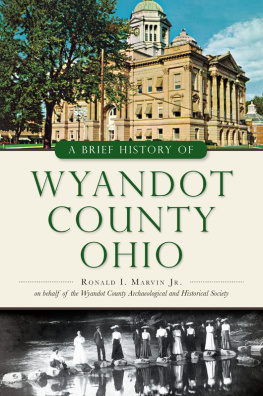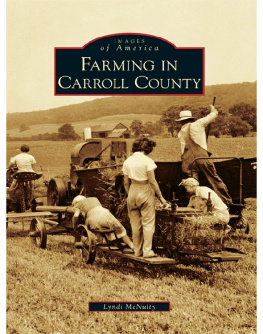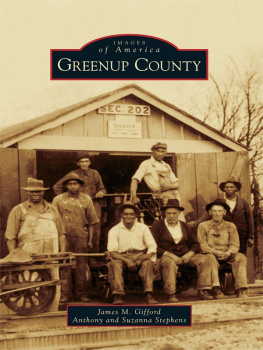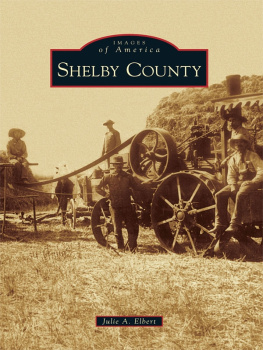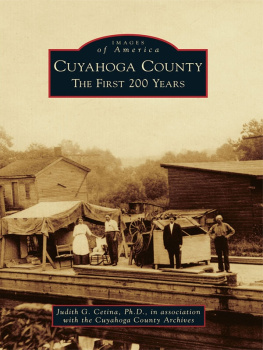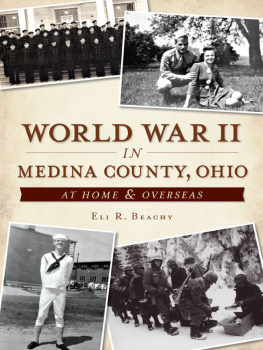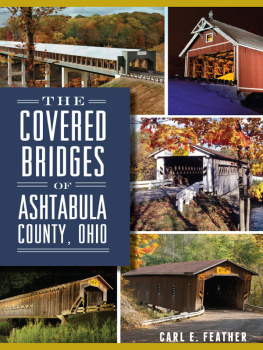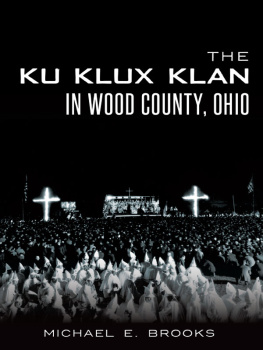


Published by The History Press
Charleston, SC 29403
www.historypress.net
Copyright 2015 by Ronald I. Marvin Jr.
All rights reserved
Front cover, top: A circa 1970 postcard view of the current Wyandot County Courthouse, erected in 1900 at a cost of $199,740. Wyandot County Historical Society; bottom: A group stands on the Stepping Stones that were used by Wyandottes and early settlers to cross the Sandusky River. Wyandot County Historical Society.
First published 2015
e-book edition 2015
ISBN 978.1.62585.535.0
Library of Congress Control Number: 2015941433
print edition ISBN 978.1.46711.768.5
Notice: The information in this book is true and complete to the best of our knowledge. It is offered without guarantee on the part of the author or The History Press. The author and The History Press disclaim all liability in connection with the use of this book.
All rights reserved. No part of this book may be reproduced or transmitted in any form whatsoever without prior written permission from the publisher except in the case of brief quotations embodied in critical articles and reviews.
This book is dedicated to my parents, Ronald and Annie Marvin, who have steadfastly supported me throughout my archaeological and museum career.
CONTENTS
ACKNOWLEDGEMENTS
I would first like thank the board of trustees of the Wyandot County Archaeological and Historical Society for its support in this project and for providing unlimited access to research materials, documents and images. Aside from certain photographs I took specifically for this book, all of the images used in the book are from the Wyandot County Archaeological and Historical Society photographic and document archives. I need to extend a special thank-you to all of the donors who have graciously provided historical materials to the society since its inception.
I want to thank the staffs of the Upper Sandusky Community Library, Dorcas Carey Public Library and the Mohawk Community Library for their assistance in researching this book, including providing access to records and microfilm. I am indebted to the researchers and authors of previous articles and books that provided much background and historical information. The websites I visited during research are too numerous to mention, but a few I consulted regularly for dates and to corroborate information are Ancestry.com, Google Books, the Wyandotte Nation websites, Library of Congress Newspaper Archives and, of course, Google Search to send me in the right direction.
Individuals I need to recognize are Charlotte Leeth, who shared many historical stories and loaned me her notebook full of county history articles; Tom Hill, who took me on my first tour of Wyandot County historical sites and monuments; Jean Moon, Nancy Sauer and Betsy Bowen, who told me many stories about the Wyandotte Indians and the Mission Church; Dan Shields, Erin Bartlett, Sarah Logston, Betty Brown and the staff of the Ohio History Connection, who offered support at the Wyandot Indian Mill; Wyandotte chiefs Billy Friend, Norman Hildebrand and Ted Roll, who shared stories about the current Wyandotte Nations; my fellow curators Janet Engle, Brittany Molnar, Robin Conley and Cassie Carlson; Bonnie Eyestone and Katherine and Minette Hull, who gave unwavering support of my local historic efforts; James Gatchell and Sara Lou Binau, who detailed historic stories about the area; Don and Nancy Bower, who were sounding boards during research; my parents, Ron and Annie Marvin, who listened to my excitement when I found new and unique historical information; and Krista Slavicek and the staff at The History Press, who provided me this opportunity. I also need to thank everyone I have encountered during my time as curator at the Wyandot County Museum: you are the reason for sharing this brief history.
INTRODUCTION
When writing a book like this it is extremely difficult to condense several thousands of years of human habitation and development into a little less than two hundred pages. There are definitely hundreds of historical items and stories I had to leave out and others that I could only briefly mention. Local museums and historical sources in the bibliography detail many of these missing stories.
The tale of Wyandot County goes back thousands of years to the first inhabitants following the last ice age. Until the emergence of European traders and settlers, numerous native tribes hunted and lived in this part of northwestern Ohio. Of all the native tribes living in the Ohio Territory, the Wyandottes are most associated with our county. Where they once had free reign over the entire state, they had been restricted to two small reservations in or near then Crawford County by the early 1800s. In 1843, the Wyandotte Nation, the last of the native tribes to live in Ohio, was moved west to the Kansas Territory.
The U.S. government formed Wyandot County in 1845 from former lands of the Grand Reserve and surrounding counties. Early pioneers moved into the county, cleared land and drained marshespreparing it for future settlement. Growth in and around the former Wyandotte town of Upper Sandusky resulted in its incorporation in 1848. Several other towns sprang up around the county (Carey, Nevada, Sycamore, Marseilles), which aided in its growth and prosperity.
By the late 1800s, railroads had replaced wagons on the Indian trails and plank roads as the primary mode of transportation. The first ones arrived in the 1850s and soon crisscrossed the county. When the young automobile industry took hold, carriage makers began to work on horseless carriages, and Upper Sandusky even hosted its own car manufacturer. The year 1913 witnessed the birth of the coast-to-coast Lincoln Highway, which ran east west directly through the county. As air travel became more common, the county established its own airport.
Military service has been a common theme from the formation of the county. Beginning with the volunteers of the Mexican and Civil Wars to the draftees of World War II and Vietnam and continuing with the current volunteers in the armed forces, Wyandot Countys residents have answered the call of duty. Memorials to these brave men and women can be found in towns and cemeteries throughout the county.
Weather- and transportation-related disasters were all too frequent as well, including the Great Flood of 1913, the blizzard of 1976, numerous train wrecks and the crash of Lake Central Airlines Flight 527. Firebugs struck early on, leading to the formation of local volunteer fire departments that continue to the present.
Wyandot County has also been home and host to international actresses, professional athletes, nationally known companies, The Shawshank Redemption, the Liberty Bell, Charles Dickens, Wyandotte chiefs, Ohio governors, U.S. presidents and even the first man to walk on the moon. There are several historical sites, monuments, memorials and museums in Wyandot County to visit that will enhance and illustrate the stories contained within this volume. It is through connecting with our past that we can illuminate our future. This was an attempt to highlight Wyandot Countys history for current and former residents, plus those with a love for the past. I hope you enjoy reading it.
1
PREHISTORY OF WYANDOT COUNTY
Next page
